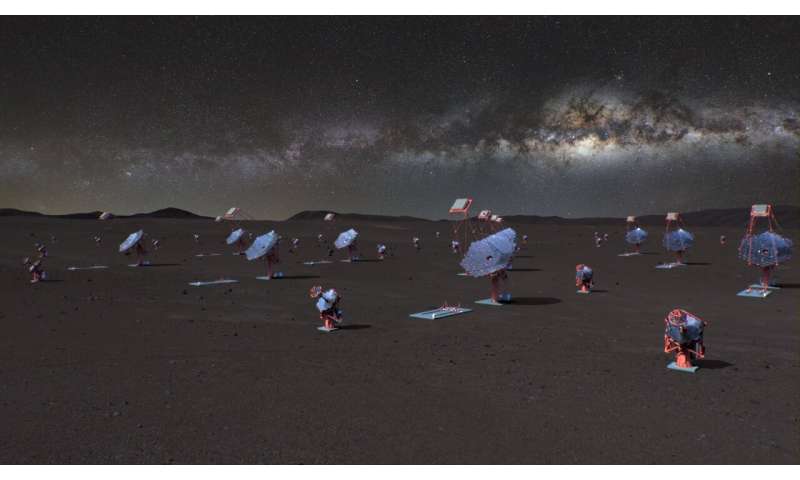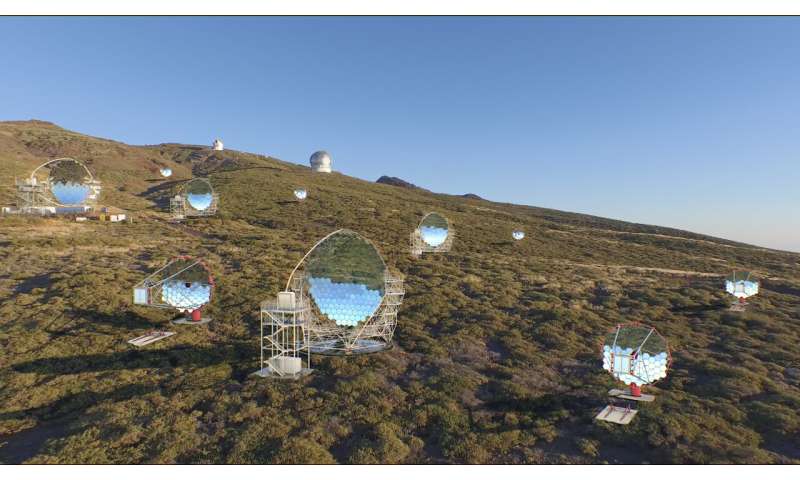The CTAO Will Double its Staff as Major Infrastructure Development Begins In 2024

On 6 September 2023, the Cherenkov Telescope Array Observatory's (CTAO's) two governing bodies, the Board of Governmental Representatives (BGR) and the CTAO gGmbH Council, gathered to agree on the significant forthcoming measures to advance the Observatory to its construction phase. During the meeting, both bodies unanimously certified their commitment to the progress of the CTAO, including a foreseen endorsement of up to approximately 30 million euro for 2024. This represents a significant increase in annual funding, which will enable the Observatory to not only move forward with substantial infrastructure development but also to double its workforce.
The CTAO is in the process of a two-step application to transition from a gGmbH (under the German law) to a European Research Infrastructure Consortium (ERIC, under the European law). While the first step has been completed, discussions with the European Commission concerning the second step are still ongoing. The agreement between the BGR, comprised of representatives of the future legal entity's member countries, and the CTAO gGmbH Council, allows the project to proceed in the meantime.
"While we continue to work towards obtaining the ERIC status, the member countries and organisations within the BGR are prepared to advance the project to its next phase," explains Aldo Covello, Chair of the BGR. Markus Schleier, Chair of the CTAO gGmbH Council, stated: "The pledge of the BGR and the agreement we have reached in the Council will not only ensure the stability of the project but will undoubtedly help the CTAO attract new talent and investment as it continues to grow."
The current legal entity of the CTAO, the CTAO gGmbH, and its partners have carried out extensive design and pre-construction activities, including the advancement of telescopes, such as the LST-1, the prototype of the Large-Sized Telescope under commissioning on the CTAO-North site in La Palma, Spain. In 2024, the Observatory plans to open at least 30 new positions and start major infrastructure development including building roads, power systems, and foundations for its southern array site in the Atacama Desert (Chile). Together with the very important developments in the northern array site, this represents a major milestone for the project.
These steps will bring the Observatory closer to realizing its planned 64 telescopes, which will deliver an unprecedented sensitivity in the quest to unveil new discoveries in the high-energy gamma-ray Universe.

About the CTAO
The Cherenkov Telescope Array Observatory (CTAO; www.cta-observatory.org) will be the first open ground-based gamma-ray observatory and the world's largest and most sensitive instrument for the exploration of the high-energy Universe. The CTAO's unparalleled accuracy and broad energy range (20 GeV- 300 TeV) will provide novel insights into the most extreme and powerful events in the Cosmos, addressing questions in and beyond astrophysics falling under three major themes: Understanding the origin and role of relativistic cosmic particles, probing extreme environments (such as black holes and neutron stars) and exploring frontiers in physics (such as the nature of dark matter). To do so, the CTAO has two telescope array sites: CTAO-North in the northern hemisphere at the Instituto de Astrofísica de Canarias's (IAC's) Roque de los Muchachos Observatory on La Palma (Spain), and CTAO-South in the southern hemisphere near the European Southern Observatory's (ESO's) Paranal Observatory in the Atacama Desert (Chile). The headquarters is hosted by the Istituto Nazionale di Astrofisica (INAF) in Bologna (Italy), and the Science Data Management Centre (SDMC) is hosted by the Deutsches Elektronen-Synchrotron (DESY) in Zeuthen (Germany). The CTAO will also be the first observatory of its kind to be open to the worldwide scientific communities as a resource for data from unique, high-energy astronomical observations.
The Board of Governmental Representatives (BGR) is the committee preparing for the CTAO's legal status transition, formed by 12 countries and one intergovernmental organisation: Australia, Austria, Brazil, Czech Republic, European Southern Observatory (ESO), France, Germany, Italy, Japan, Poland, Slovenia, Spain and Switzerland. The CTAO gGmbH Council is the gGmbH's governing body, composed of shareholders from 11 countries and one intergovernmental organisation, as well as associate members from two countries.
The CTAO gGmbH works in close cooperation with partners from around the world toward the development of the Observatory. Major partners include In-Kind Contribution teams, such as the telescope teams that are developing essential hardware and software, in addition to the science collaboration, an international group of researchers who have provided scientific guidance since the project's inception.
The CTAO was promoted to a "Landmark" on the European Forum on Research Infrastructure (ESFRI) Roadmap 2018, and was ranked as the main priority among the new ground-based infrastructures in the ASTRONET Roadmap 2022-2035.
Provided by Cherenkov Telsecope Observatory